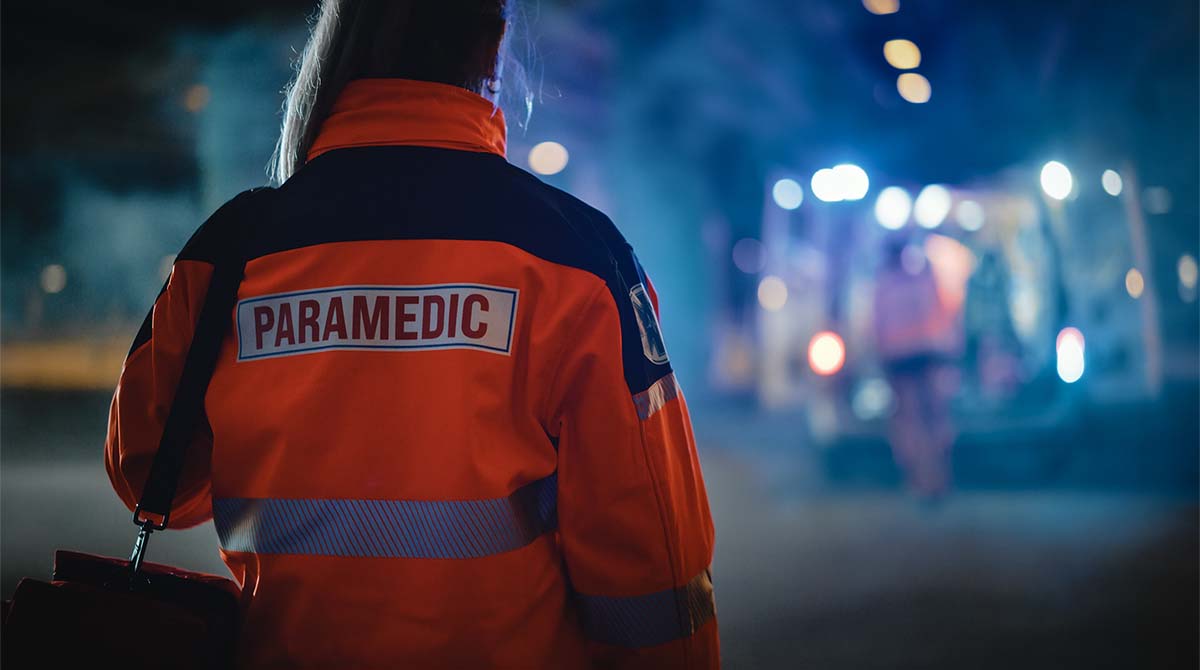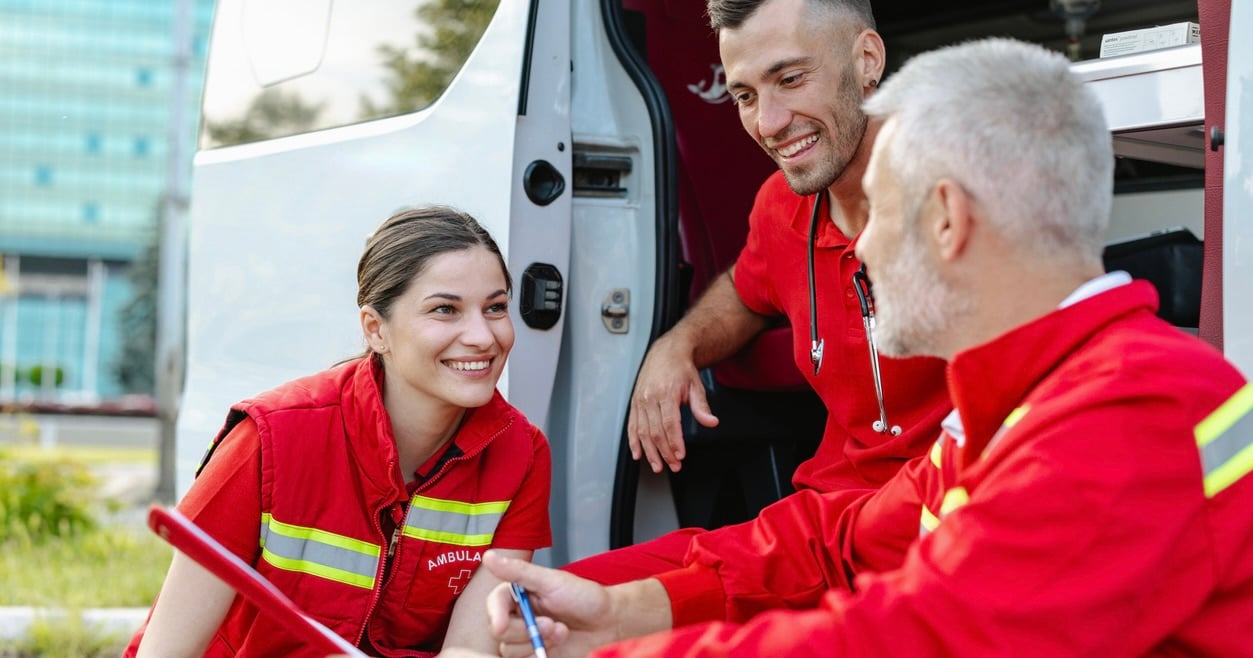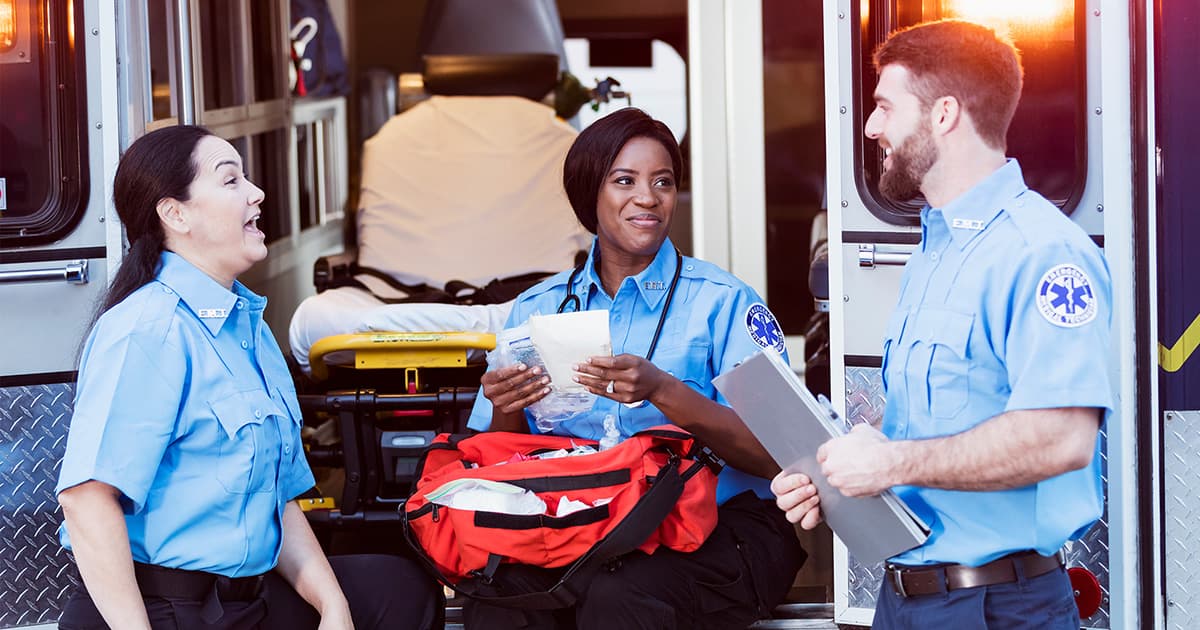Does Your Team Feel Unseen? Close the Leadership Disconnect with 2-Way Communication
Editor's Note: In July 2025, EMS1 and Fitch & Associates released their annual EMS trend survey, What Paramedics Want, proudly sponsored by Pulsara....
3 min read
 Max Landon
:
Jul 16, 2025
Max Landon
:
Jul 16, 2025

The 2025 hurricane season has arrived, and emergency professionals are watching the forecasts closely. The National Oceanic and Atmospheric Administration (NOAA) predicts an above-normal Atlantic hurricane season this year with increased chances of severe storm activity. This is a serious concern for EMS, fire, and public safety agencies, especially in communities still recovering from the loss of life and property caused by Hurricanes Helene and Milton.
For first responders, hurricane preparedness is about more than gear checklists. It's about coordination, communication, and protecting both your crew and your community. These 10 essential steps can help EMS professionals stay safe and effective in the face of a major storm.
While high winds are an immediate threat during intense storms, the deadliest hurricane effects are often secondary: storm surge, flash flooding, inland rainfall, and post-storm hazards like carbon monoxide poisoning, torn power lines, and building collapses.
Storm surge is the leading cause of death during hurricane events, and can be a hazard much farther inland than many expect. Educate your teams and your community to recognize and respond to these risks before they escalate.
During storms, reliable communication is only half of the equation. Response agencies need redundant communication systems and real-time operational awareness to coordinate under pressure. Have your teams ready with:
In 2024, Pulsara supported the triage and transport of over 2800 patients during Hurricanes Beryl, Helene, and Milton, with in-person training and 24/7 support that kept agencies connected.
Make sure all emergency and high-water vehicles are inspected for flood readiness. Stock extra fuel, bottled water, PPE, trauma kits, and high-visibility gear inside every response vehicle. Confirm all radios, GPS units, and floodlights are functional. Assign trained water rescue staff to dedicated teams, and inventory and label equipment for rapid deployment.
Create accessible caches of essential supplies—enough for at least 72 hours of independent operations. Include:
Organize gear clearly so responders can grab what they need fast.
No agency responds alone. Coordinate with fire, EMS, law enforcement, hospitals, and public health partners. Utilize regional tools like the NIMS Joint Information System for unified messaging, and align with frameworks like FEMA’s Stafford Act for mutual aid and federal resources.
Conduct regular drills within your region for water rescue, mass casualty triage, and full-gear response under storm-like conditions. Knowing how to coordinate and work together can make all the difference during a live response.
Many residents, even in historically high-risk areas, are hesitant to follow evacuation orders and leave their homes. Storm severity is often unpredictable, and it can be easy for some residents to ignore storm warnings. Hurricanes Helene and Milton saw unprecedented storm surge in some inland communities, costing the lives of several civilians who did not evacuate.
It is important to start preparing your community now. Spread the word that urgent evacuation orders are not optional, even if your area has been unaffected by past storms.
Some residents can’t evacuate without help. Identify and map vulnerable populations in advance—elderly, disabled, oxygen-dependent, or mobility-limited. Coordinate with other local agencies to tag high-priority addresses and prepare for carry-outs or assisted evacuations, especially in multi-story or flood-prone areas.
Major storms often produce mass casualty conditions. Train for patient influx ahead of time, and be ready with scalable triage protocols and tools that streamline patient tracking. In 2024, agencies in Florida used Pulsara and patient wristbands for mass triage, sharing patient status with hospitals, and keeping accurate transport records in real time.
Protect yourself and your family. Always follow instructions from local and state authorities, including prompt evacuation orders. If responders are worried about loved ones at home, it impacts their ability to stay mission-ready.
Support yourself and your crews with:
Prepared responders are effective responders.
Hurricanes don’t just test logistics—they take a toll on mental health. Long shifts, traumatic scenes, and limited downtime contribute to burnout, anxiety, and PTSD. These mental health challenges are common amongst EMS and fire teams year-round, but stakes are elevated during a severe disaster season.
It’s imperative to build peer support and behavioral health into your response plan from the start. Schedule rest periods, encourage check-ins with loved ones, and have mental health services available ahead of time. No one should have to struggle alone.
In a high-risk hurricane season, it’s the details that save lives. While having the right tools and recources is imperative, it is even more important to take care of the people that use them. From strong communication and MCI coordination to family support and mental health planning, effective hurricane readiness for EMS professionals must be comprehensive and people-focused.
![]()
Pulsara is proud to support agencies nationwide before, during, and after hurricane events. Our platform helped streamline the 2024 response to Beryl, Helene, and Milton, and we're here to support your teams with the tools, training, and real-time visibility needed when storm threats arrive. To learn more about how Pulsara can help your agency improve MCI management, check out our Streamlining Crisis Response webinar.

Editor's Note: In July 2025, EMS1 and Fitch & Associates released their annual EMS trend survey, What Paramedics Want, proudly sponsored by Pulsara....
![[PRESS RELEASE] Published Research Finds Up to 31% Faster STEMI Treatment Times in Rural Hospital Setting with Pulsara](https://www.pulsara.com/hubfs/_1_website-page-blog-assets/pulsara-hosp-teams-assign-cardio-stemi-rn-1200x701.jpg)
Published research shows how using Pulsara, alongside standardized field activation and a focus on stakeholder relationships, improves STEMI care and...

Editor's Note: In July 2025, EMS1 and Fitch & Associates released their annual EMS trend survey, What Paramedics Want, proudly sponsored by Pulsara....